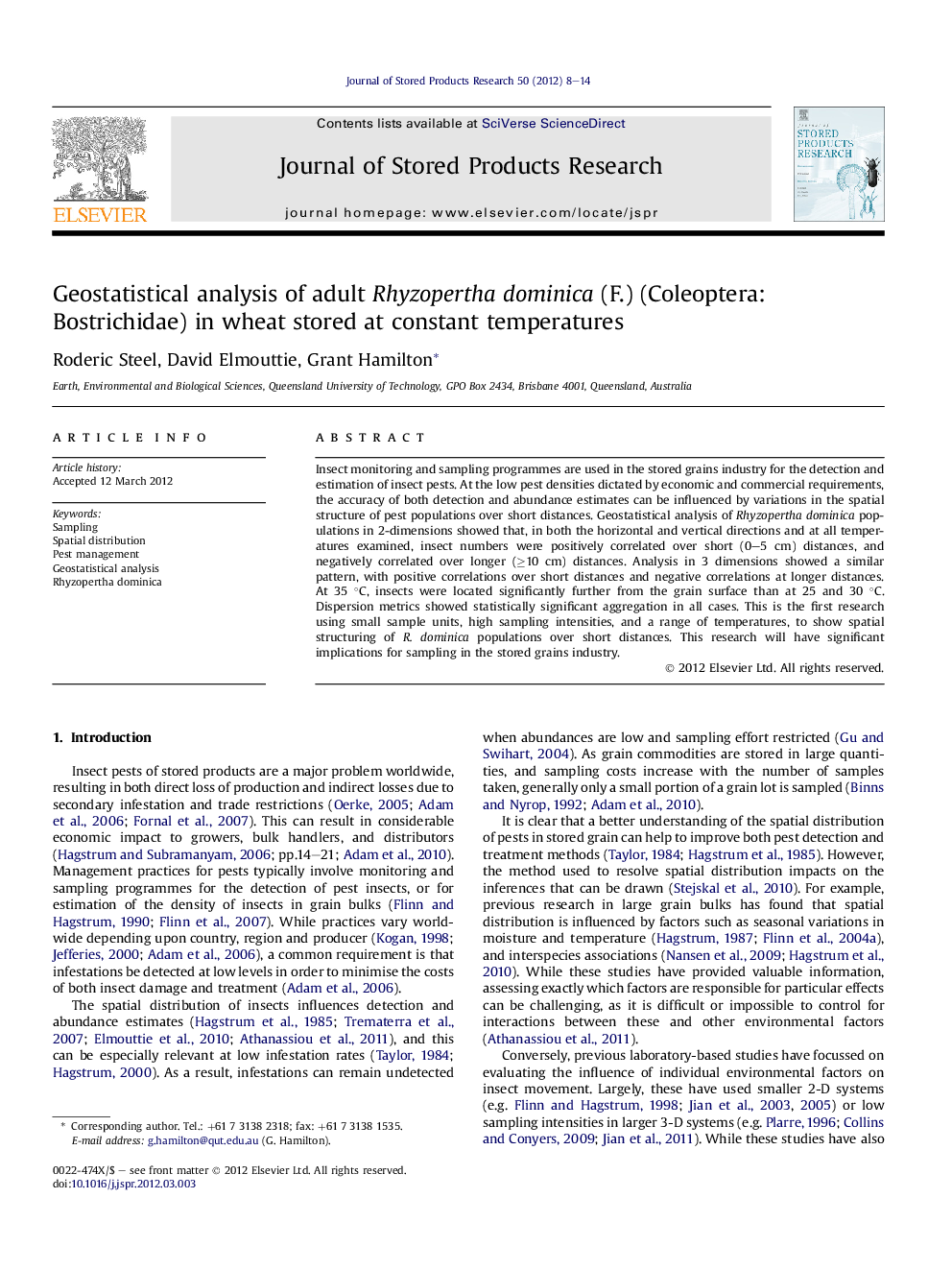| Article ID | Journal | Published Year | Pages | File Type |
|---|---|---|---|---|
| 4517174 | Journal of Stored Products Research | 2012 | 7 Pages |
Insect monitoring and sampling programmes are used in the stored grains industry for the detection and estimation of insect pests. At the low pest densities dictated by economic and commercial requirements, the accuracy of both detection and abundance estimates can be influenced by variations in the spatial structure of pest populations over short distances. Geostatistical analysis of Rhyzopertha dominica populations in 2-dimensions showed that, in both the horizontal and vertical directions and at all temperatures examined, insect numbers were positively correlated over short (0–5 cm) distances, and negatively correlated over longer (≥10 cm) distances. Analysis in 3 dimensions showed a similar pattern, with positive correlations over short distances and negative correlations at longer distances. At 35 °C, insects were located significantly further from the grain surface than at 25 and 30 °C. Dispersion metrics showed statistically significant aggregation in all cases. This is the first research using small sample units, high sampling intensities, and a range of temperatures, to show spatial structuring of R. dominica populations over short distances. This research will have significant implications for sampling in the stored grains industry.
► Grain pest populations were sampled with high intensity and spatial resolution. ► Significant aggregation was found all cases. ► Spatial patterns were similar at all temperatures and insect densities tested. ► The location of the spatial pattern varied only at 35 °C.
